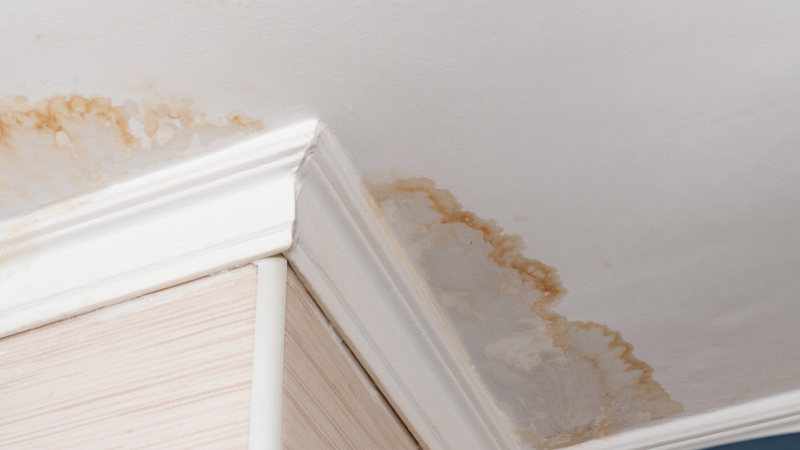The content below on the subject of How to Fix a Water Damage Bathroom is seriously insightful. You should take a peek.

The bathroom is extremely vulnerable for moist accumulation and also possible water damages as a result of the constant use water in it. This post uses basic evaluation methods to help spotting water damage hazards.
The constant use water in the shower room makes it very susceptible for wet buildup as well as prospective water damage. By inspecting it consistently, you can decrease water related damages.
The adhering to collection of assessments is easy to execute and also must be done once in every three months in order to maintain your shower room in good shape and to stop prospective water damages brought on by the bath tub, the shower, pipe joints and plumbing, sinks, closets, as well as the bathroom
Do not neglect executing these assessments and be thorough while executing them. Bear in mind that these simple examinations can save you a lot of money by providing very early signs for water damages
Sinks and Cabinets
Sinks and also cupboards are exposed to wetness and moisture everyday and are commonly neglected. Evaluate frequently under the sink and on the kitchen counter above it. Fix any drip in the trap as it might suggest drainpipe issues. Look around the sink, sluggish draining pipes may indicate a blocked drainpipe. Replace sink seals if they are fractured or loose.
Bath tub as well as Shower
The shower and also bathtub call for special focus and upkeep. Check the ceramic tiles and also replace if fractured. Ensure that there is no missing out on grout between the floor tiles. Examine and also replace split caulking at joints where the wall surfaces satisfy the flooring or the bathtub. Blocked drains pipes and pipelines troubles will stop the bath tub from drying and also might indicate severe problems below the bath tub. Consult with an expert quickly to prevent structural damages. Pay attention to discolorations or soft areas around the bath tub wall surfaces as they may suggest an inner leakage.
Plumbing
Signs for water damage are difficult to find since many pipelines are set up inside the wall surfaces.
Pay unique focus to floor covering and walls moisture and spots as they may suggest an undetectable plumbing issue. Examine dampness degrees in adjacent areas too.
The Commode
The commode is a vulnerable water junction. Check the water lines and search for leaks around the toilet seat, in the hose, and under the water tank. If you detect any indicators of dampness on the flooring around the commode, look for leakages in the toilet edge as well as storage tank seals.
Understand that hanging bathroom bowl deodorants increases the chances for clogs.
Water Damage Signs In The Bathroom To Avoid Cleanup
Musty smell
This is one of the easiest signs to catch because musty smells are so odorous. The damp, earthy, moldy smell should be a big red flag. The smell will develop when moisture gets trapped in surfaces, and begins to facilitate mold growth. Leaking pipes under cabinets, inside walls, and behind shower fixtures will cause moisture to stay trapped and not dry, which will lead to mold growth and spread. As soon as you notice any musty smells in your bathroom, have it checked for hidden water damage and cleanup signs.
Visible mold
If the smell isn’t there to give it away, sometimes you will actually see mold growth. Finding mold in your bathroom is a serious problem, because mold is very harmful to your health. By the time mold growth is visible, it also means that water damage has already occurred and been present for some time. The only way the mold problem can be resolved is to find the source of the moisture and get it stopped. To safely and adequately remove mold, you need to have professionals handle the remediation. Do not waste any time in getting mold problems addressed, fixed, and sanitized so that you can protect you and your family from the many respiratory symptoms caused by mold exposure.
Damaged floors
Bathroom floors should be able to withstand some exposure to water while still remaining in good condition. However, when excess exposure or water leaks occur, they will begin to damage even the most water-resistant flooring. If you notice any cracking, bubbling, staining, or warping on your bathroom floors, there is probably a water leak somewhere causing the distortion. If you notice areas of the floor have become softer, or even have a spongy feeling, there is probably damage to the subfloor. Subflooring is typically made up of plywood. When plywood is exposed to water or moisture, it will absorb it. Once it has become saturated, the weight of the excess water will cause the wood to swell and soften. Check the floors in your bathroom frequently to catch any of these sings before they lead to damaged subflooring.
Changes on walls
When water leaks behind walls, it will cause changes in the drywall. Peeling plaster, blistering paint, and soggy wallpaper are all good indicators that excess water is building up behind the wall. Water leaking behind drywall will cause it to swell and be soft to the tough. If you start to notice gaps along the trim of your walls, or where tile meets the wall, it could also be a strong indicator that there is a leak behind the wall. Any changes, distortion, or damage on the walls should be evaluated as soon as you notice it to prevent further water damage and cleanup.

As an enthusiastic person who reads on How to Repair and Prevent Bathroom Water Damage, I imagined sharing that short article was sensible. Sharing is good. Who knows, you may just be doing someone a favor. Thanks for your time invested reading it.
Estimating
Comments on “Ways to Repair a Water-Damaged Wall in the Bathroom”